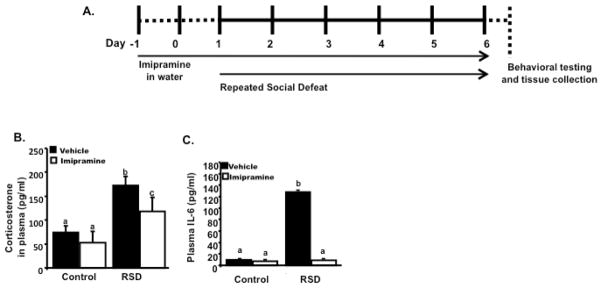Figure 1.
(A) Experimental schematic is shown. C57BL/6 mice were randomly allocated in different experimental groups. Mice were exposed to 6 cycles of Repeated Social Defeat (RSD) or left undisturbed and treated with imipramine in their drinking water or vehicle (untreated water) starting two days before social defeat. (A) RSD promoted higher levels of corticosterone in plasma, immediately after the last cycle of RSD. Animals subjected to RSD and treated with imipramine had increased levels of corticosterone than HCC, but lower than RSD animals treated with vehicle. The next day after the last cycle of RSD, blood was collected to determine levels of IL-6 in plasma. (B) Mice subjected to RSD and treated with vehicle had increased levels of IL-6 in plasma. Levels of IL-6 in plasma of mice subjected to RSD and treated with imipramine had lower levels of this cytokine, comparable to HCC. Bars represent the mean±SEM. Means with different letters (a,b,c) are significantly different from each other (p<0.05). Control=Home cage controls; RSD=Repeated Social Defeat

